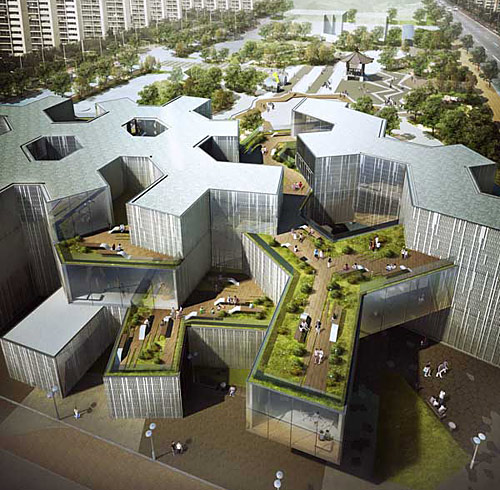
The proposed Seoul Museum of Art aims to supplement the limited exhibition and storage space existing in Seoul. Apart from providing much needed additional exhibition and art space, the proposed building aims to redress the balance of cultural institutions in the city, the new museum will be located in the North-East of Seoul which is currently lacking any major cultural buildings.
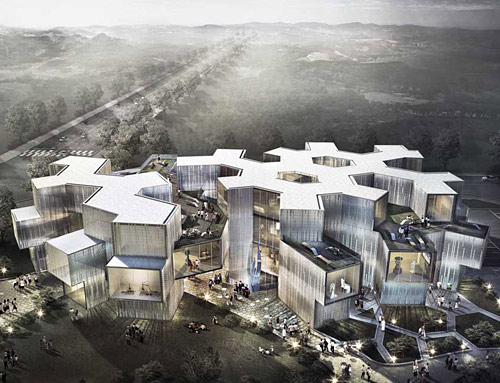
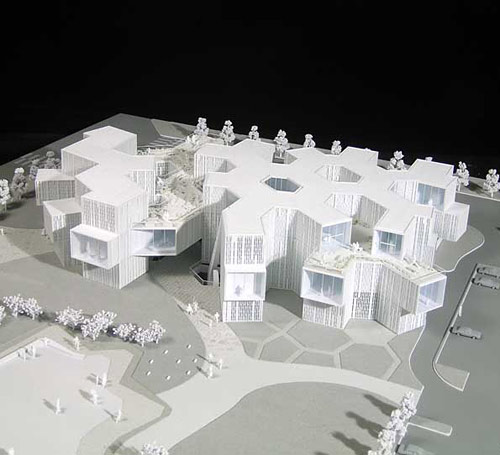
The proposed site is located in a typical centrally planned residential area, a 'bed town' for 140,000 residents, many of which are young families. The residential density in these areas is comparatively high, with very little public space, green parks, community facilities or cultural spaces.
The designated building plot is located in one of the few green parks and the project attempts to redefine the relationship between art gallery and its surroundings in consideration of this context.
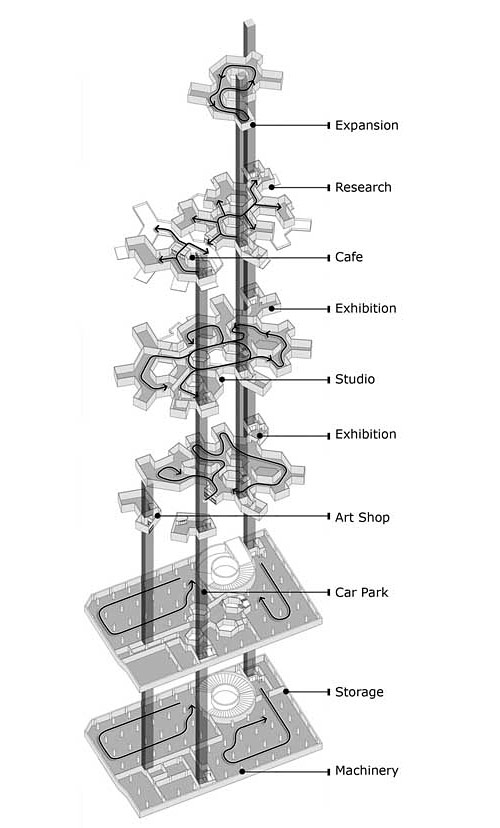
Rather then occupying the site and displacing the green park that existed previously, the proposed mass is shaped to respect the existing pedestrian flows through the site and to preserve as much of the ground as open space as possible. In this way, the building attempts to become an integral part of the park rather then a replacement.
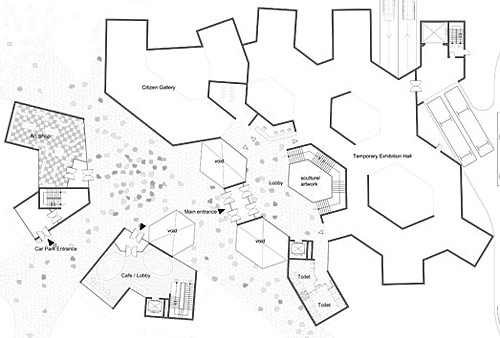
The building is not intended to be just an extension of the existing Museum of Modern Art in terms of exhibition and storage space but also a museum for the local community. This requirement to provide art spaces for children, youth programs and events led to a building design that consciously attempts to overcome the notion of museums as inward looking 'temples'.
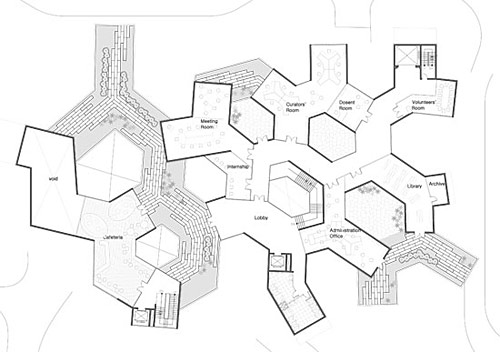
Rather then creating an imposing architectural single mass with a single entrance, the building is broken into a number of open and half-enclosed courtyards with fingers extending out into the park. The stratified and bifurcating massing allows for a number of windows into the galleries itself and creates smaller, more human scale spaces that invite inhabitation, exploration and occupation.
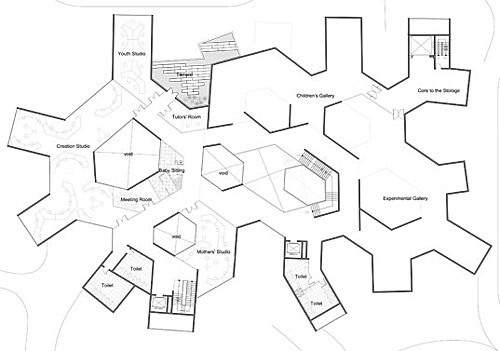
Entrances to various functions and rooms are distributed across the open courtyards that are located in the park. This will allow some of the event, children and youth programs to operate with a degree of independence and openness that would be impossible for the museum as a whole.
LOCATION: Seoul, South Korea
CLIENT: City Council of Seoul
DATE: 2009
STATUS: Competition
SIZE: 13,000 m² Museum Exhibition and Storage Space
BUDGET: Not disclosed
Credits:
ACME, London - Kelvin Chu, Daewon Kwak, Friedrich Ludwig, Andreas Reeg
Yooshin Architects & Engineers - Daeoh Kwon, Eunkyoung Ko, Hyunkyoung Oh, Jungheum Yun
ACME









